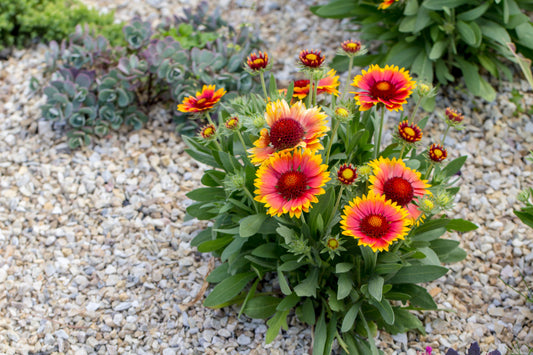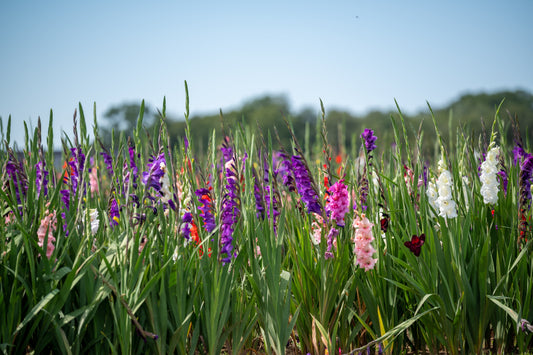Passiflora Passion Flower Planting & Growing Guide
Planting Guide Information
-
Pre-PottedPlanting Depth
-
Species dependentPlanting Proximity
-
Spring to SummerPlanting Season
-
Some are fragrant and produce the irresistible passion fruit! Others are more ornamental.Plant Benefits
-
ModerateWater Quantity
-
SummerBloom Season
-
Full SunSunlight Quantity
-
Species dependent; Zones 7-11Hardiness Zones
Additional Growing Information
Where to Plant
Passion Flower Vines grow well in areas where the soil drains well, and they will receive full-day sun or light shade. If you notice water puddles 5–6 hours after a hard rain, choose another spot as these beauties will not survive in soggy soil. Be sure to check the winter hardiness information provided for each variety and select one suited to your growing environment. If you've chosen a variety that's marginally hardy in your region, plant it near a sunny stone or brick wall to provide extra protection from the winter cold.
When to Plant
Plant your Passion Flowers in the spring when the soil is warm. If the soil is still quite cool, wait until it warms before planting outdoors. These fast-growing vines are evergreen and quickly cover fences and trellises in warm climates; in cold climates they may shed some or all of their leaves and go dormant or semi-dormant in the winter.
How to Plant
- For outdoor landscape planting, find a spot where the soil drains well, and your plants will receive plenty of sunlight. Dig a hole and position the vine with the soil on the root ball level with that in your garden bed. Tuck the plant in and tamp down the soil to remove any air pockets.
- For container planting, start with a moderately large container with drainage holes and fill it with any good quality potting soil. Ensure the soil drains well and site your container where it will receive full-day sun or light shade. Tuck the plant in and tamp down the soil to remove any air pockets.
- Water thoroughly to settle the soil around the roots without air pockets.
How to Grow
- Water as needed during active growth periods if Mother Nature fails to provide, supplying about 1–1.5" of moisture per week. If planted in a terracotta pot, water more frequently as they tend to dry out quickly.
- Apply a light amount of mild, balanced fertilizer before new growth emerges in the spring and then every four to six weeks until early fall.
- Water lightly through the fall in cold areas and sparingly during the first winter in warm regions if your climate is dry.
- Allow your vine to rest for a few months before beginning its next growing cycle in the spring.
Passion Flower Tips & Tricks
- Grow your Passion Flowers in greenhouses or bright sunrooms by following the instructions for container planting.
- Bear in mind that more sunlight tends to produce more flowers.
- Shelter your Passion Flower plant from strong or drying winds.
- Eat the juicy Passion Flower fruit (if your vine is a fruiting variety) when it is fully ripe, as unripe fruit can cause stomach upset.
- Check the information provided for each variety to select an appropriate container suited to your plant's growing size over the years.
- Expect plants to sprout new growth quickly in warm soil.
- Give your Passion Vines something to climb, such as a fence or trellis. It will twine around whatever support it finds without ties.
From the Family
-
 50% OffPreorder
50% OffPreorderPassiflora - Passion Flower Ruby Glow
1 Plant in a Quart PotRegular price $24.99Sale price $24.99 Regular priceUnit price per$49.9550% OffPreorder -
 30% OffPreorder
30% OffPreorderPassiflora - Passion Flower Victoria (Edible Fruit)
1 Plant in a Quart PotRegular price $34.97Sale price $34.97 Regular priceUnit price per$49.9530% OffPreorder -
 30% OffPreorder
30% OffPreorderPassiflora - Passion Flower Betty Myles Young (Fragrant)
1 Plant in a Quart PotRegular price $34.97Sale price $34.97 Regular priceUnit price per$49.9530% OffPreorder -
Passiflora - Passion Flower Edulis Frederick (Edible Fruit)
1 Plant in a Quart PotRegular price $24.99Sale price $24.99 Regular priceUnit price per$49.95Sold out -
Passiflora - Passion Flower Clear Sky
1 Plant in a Quart PotRegular price $24.95Sale price $24.95 Regular priceUnit price perSold out








